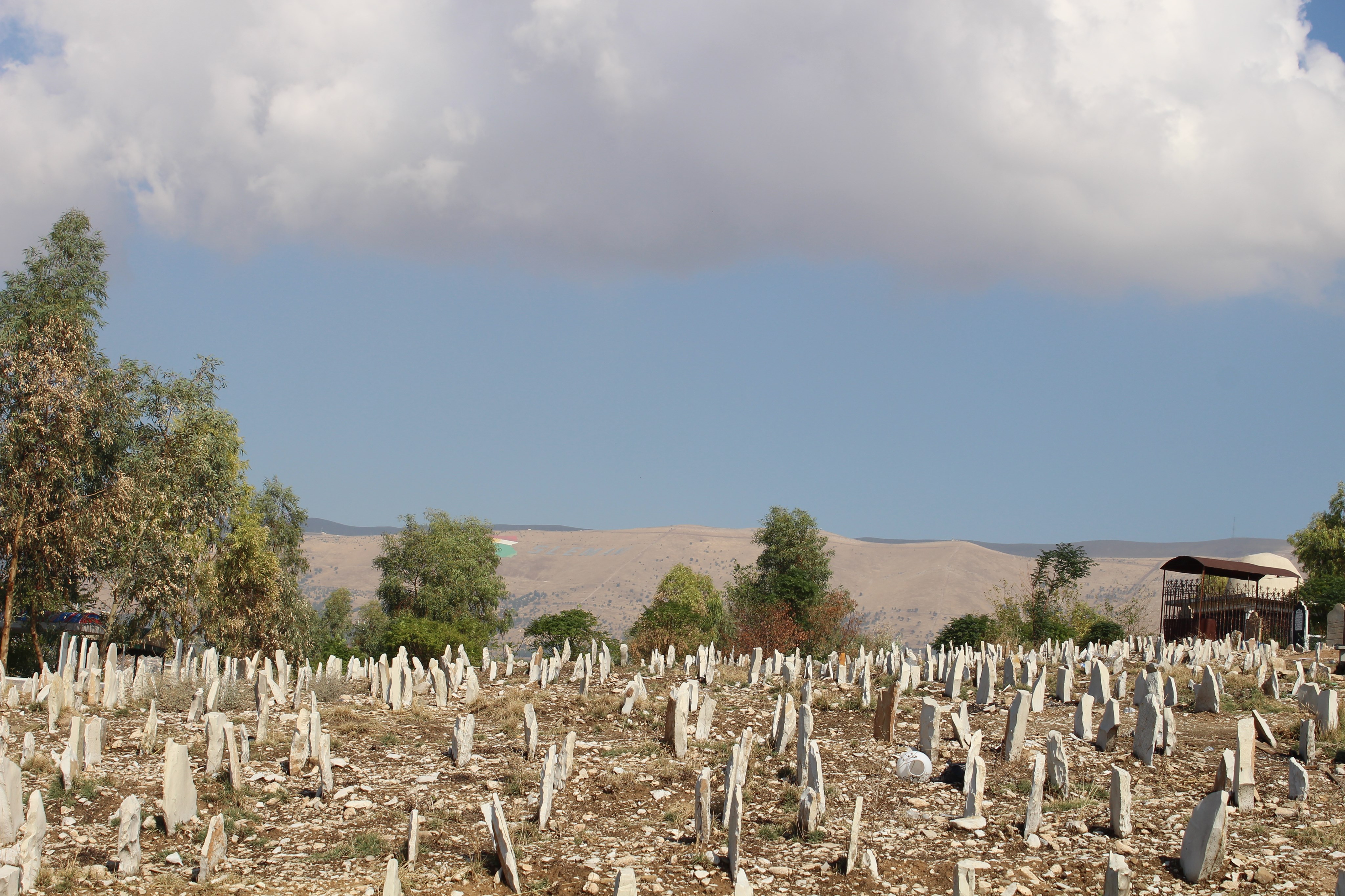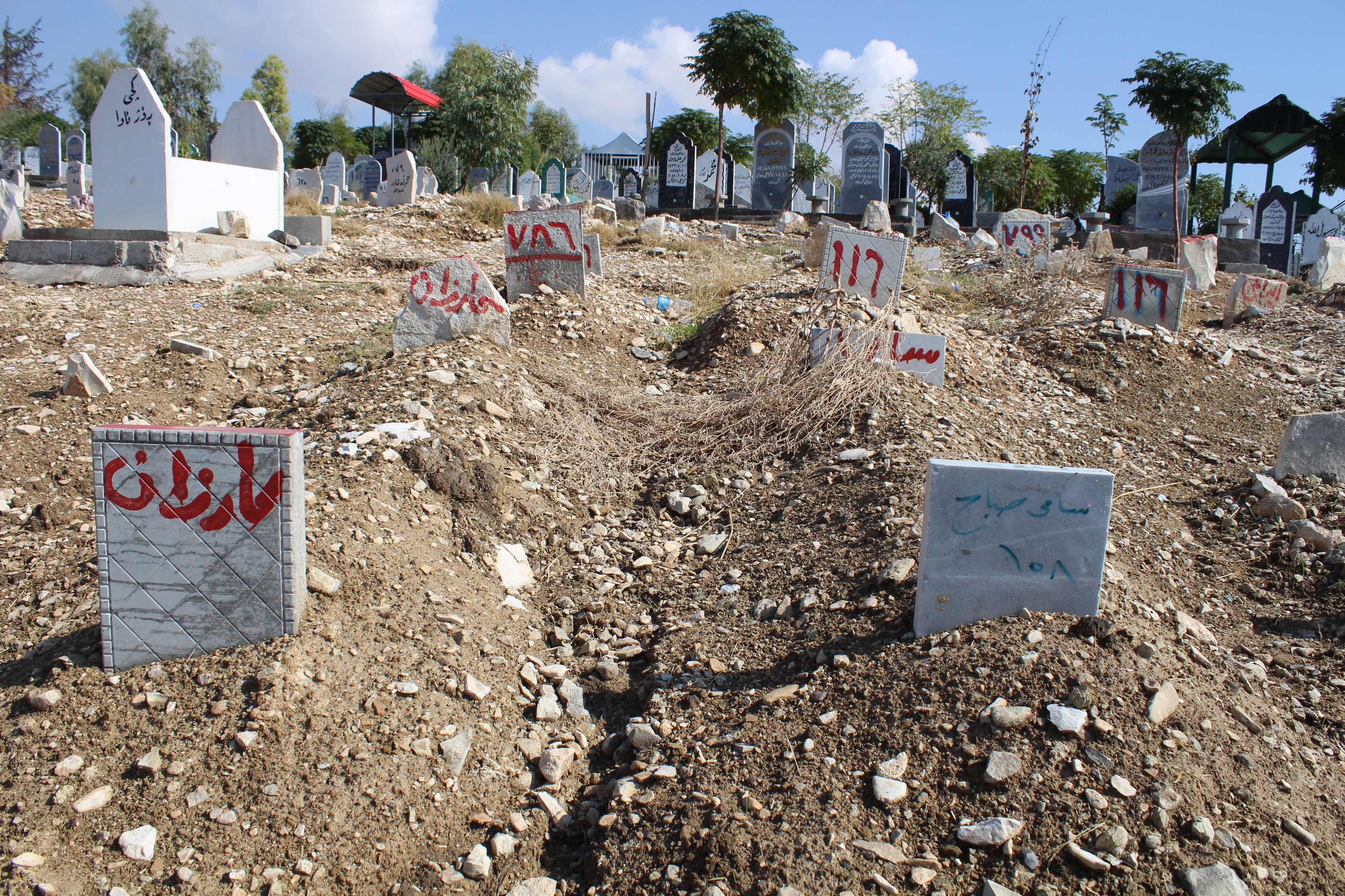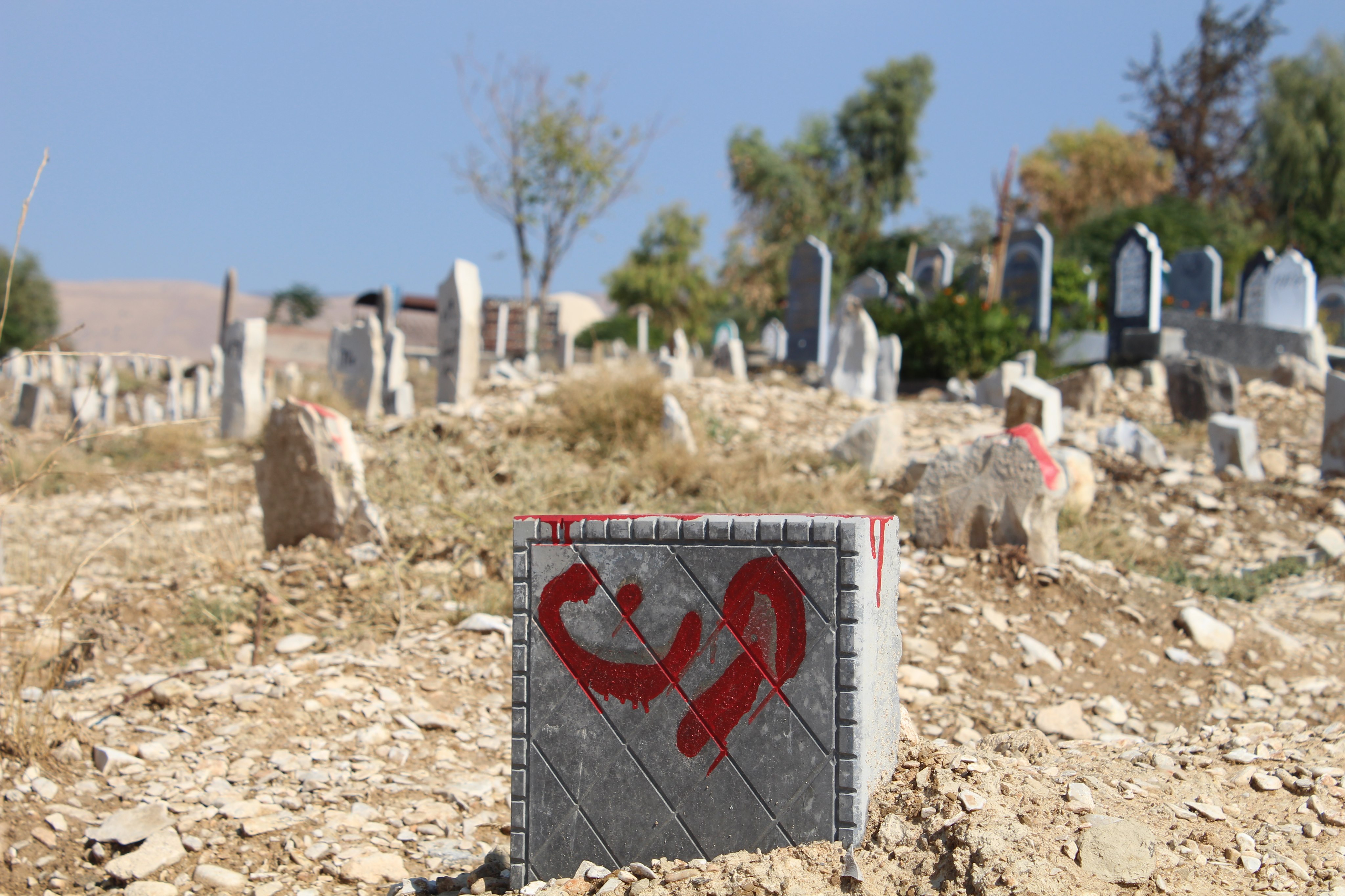“Their families kill them and throw them, these, alive or dead, are not visited by anyone, they have been alone,” Rauf Mohammed, a grave man, defined a graveyard, which only contains unknown people.
The graveyard contains two thousands graves of men and women and is located down of Saywan hill graveyard, relatively the most popular graveyard in the city of Sulaimaniyah.
The graves are differentiable from the other graves next to them. The graveyard lacks a proper structure compared to other graveyard of the city. Names, gender, or numbers are written in red on the headstones, some of which are broken. Cemetery of unknowns in the city of Sulaimaniyah and Erbil are places for many untold story of killed men and women who were buried by the state.
Rauf Mohammed, who has been a grave man for 45 years, said, “the cemetery of unknowns contains men, women,and elderly, but graves of men are more. These corpse are brought here by municipality after being kept for two months,” he said, “if they remain unknowns, they are buried here.”
Othman, a grave man and a corpse washer, said, “every year, numerous murdered women are buried here. In 2019, I buried a young woman who was from Iranian Kurdistan. Her body was abandoned in Sharbazhir region, she was 30 years old, and her corpse remained for two months at mortuary. She remained unknown and no one knew why she was killed.”
He also mentioned that no one visits the graves of those women who were killed due to social problems. There had been years in which he had buried corpse of ten murdered women.
The graveyard is their last destiny. Othman said, “the only person who visited this graveyard was a youth from Kalar district. He wanted to move a grave of a woman to Kalar, supposedly she was his lover and was killed by her family, but he was not allowed to do so.”

Sulaimanyiah, cemetery of the unknowns, February 2020. Photo: Dastan Marf
In 2019, 50 women were killed in the Kurdistan Region of Iraq, 18 in Erbil and 12 in Sulaimaniyah, according to general police department. However, Medico-Legal Department in Sulaimaniyah stated only two men were buried in that graveyard, proving that not only women are buried there.
Pathologist Barzan Mohammed stated that the Asaysh forces or the police bring the corpses to them.
He said, “the police get permission from a judge and bring the form of “request and autopsy” with the corpse. If the corpse is unknown, we first try to recognize the person and keep them in mortuary refrigerators.”
Medico-Legal Departm takes pictures of the corpse, and fills the form with all available information.
“The corpse is brought here with a form… later, the steps to recognize the corpse start in a scientific way. All the information of the corpses is recorded such as eye, hair, and skin color, height, and skin moles,” pathologist Mohammed said, “autopsying is done to learn the real reason for the person’s death.”
Based on relevant law, the corpse is kept for two months, and, in this period, the media is informed about the corpse and the information recorded, according Mohammed.
“After these announcements, if the family of the corpse comes and proves that it belongs to them, we give the corpse back.”
If there is no one claiming the corpse in the two months, then the investigative judge will be informed about the end of the legal term to keep corpse. Later, based on the judge’s decision, municipality directorate will bury the corpse.
Every corpse has a number used to review its cases whenever needed.
46 women were killed in 2018 in the Kurdistan Region of Iraq, according to the Directorate of Combating Violence against Women.
Shahla Hussein, a civil society activist, said, “killing women and women disappearance are about to become a phenomena. Beside the numbers the media announce, many more women are disappeared without the media being informed about them.
“There is no exact statistics that determine the number of the cases,” she said.

Sulaimaniyah, headstones of the graves are marked with numbers, February 2020. Photo: Dastan Marf
Shahlad stated, “in order to reduce this painful deaths of women, we should work on individuals and gender equality. This should start with education. The seed of equality should be planted in the souls of the children.”
Rawand Sabir, head of media and public relations office at the Directorate of Combating Violence against Women, said, “the statistics tell us that women still become victims in the society, but what is good is that year after the number of filled lawsuits is increasing, this indicates that Kurdish society and women in particular are becoming more aware of taking their rights through laws.”
“We have perceived that since the opening of hotline number 119, the number of lawsuits has increased. We also ask women, instead of killing themselves or setting themselves on fire, to turn to our directorate so that through legal way we will take back their rights,” Rawand said.





